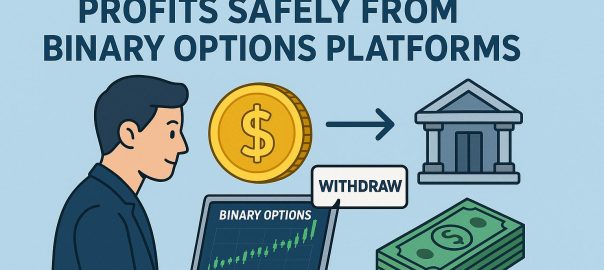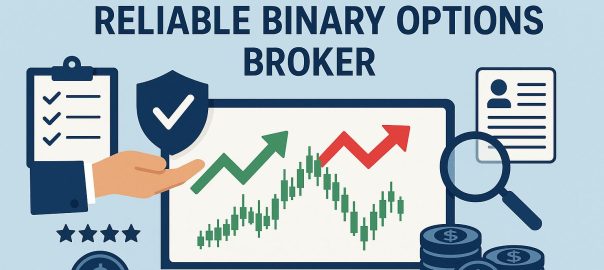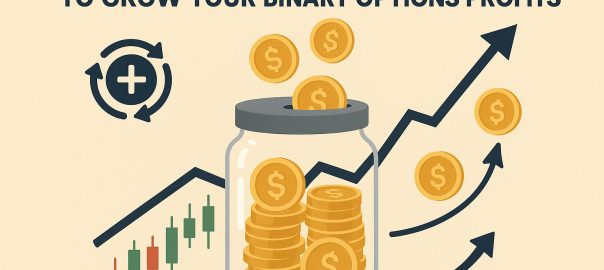How to Withdraw Your Profits Safely from Binary Options Platforms

Understanding Binary Options
Binary options trading represents an engaging yet complex investment strategy in the financial markets. It involves a simple binary choice, typically framed as “up or down” or “yes or no.” At its core, this form of trading allows investors to speculate on the direction of an asset’s price within a certain timeframe, offering fixed monetary outcomes: either a set profit or a total loss. This framework makes it possible for traders to gain returns without having to purchase the underlying asset, thereby reducing direct exposure to the market. Despite its simplicity, binary options trading necessitates a thorough understanding of market conditions and underlying risks.
As attractive as it may be, trading in binary options requires one to be cautious, especially when it comes to claiming profits. The process involves interacting with online trading platforms, which may vary significantly in their operations, terms, and regulatory adherence. It is crucial for traders to educate themselves about how these platforms function and the specific regulations and laws that apply to them in different jurisdictions before they withdraw any potential earnings.
Verify Platform Legitimacy
Ensuring that the platform you choose for trading is legitimate and regulated is the first critical step. Regulatory bodies, such as the Financial Conduct Authority (FCA) and the U.S. Securities and Exchange Commission (SEC), serve as overseers in the financial industry, providing a framework within which platforms must operate. These authorities ensure that the platforms adhere to established standards and practices aimed at protecting traders from fraudulent activities.
Confirming a platform’s legitimacy involves checking its registration details and licensing status, which are usually available on the regulator’s website. A reliable platform will be transparent and forthcoming about its regulatory status and any affiliated regulatory bodies that provide oversight. Adherence to these regulations is vital as it ensures that trades and withdrawals are conducted in a secure and transparent environment. Further, traders should seek out platforms with solid reputations, backed by positive reviews and feedback from other users, to further validate their credibility.
Understand the Withdrawal Process
Withdrawing funds from a trading platform can vary significantly from one service provider to another. Each platform has its own process and set of conditions under which withdrawals are processed. It is imperative for traders to read and understand the terms and conditions associated with withdrawals. These details typically include information on the minimum withdrawal amount, any applicable fees, and the expected timeframe for the withdrawal process.
It is often necessary to submit a request for withdrawals manually, which the platform reviews before processing. Traders should be prepared for varying processing times—ranging from instant transactions to those that may take several business days. Throughout this process, being informed of the intricacies of withdrawal policies helps traders manage expectations, avoid potential delays, and plan their financial strategies effectively, especially when dealing with potential barriers such as transaction fees or foreign exchange costs.
Verify Your Account
Account verification is a crucial component of the withdrawal process when dealing with binary options platforms. This process, commonly known as “Know Your Customer” (KYC), is designed to ensure the security of both the trader and the platform while reducing the risk of fraud. Verification requires traders to provide documentation that confirms their identity and residence.
Typical documents requested include a valid passport or driver’s license for identity verification and a utility bill or official correspondence for proof of address. This information is necessary to create a secure trading environment, as it prevents unauthorized transactions. Some platforms might also ask for proof of income or source of funds to comply with anti-money laundering regulations. Successfully navigating this account verification step is essential before any attempt at withdrawing funds, as it helps the platform validate that all transactions are legitimate.
Choose a Reliable Withdrawal Method
Choosing the right withdrawal method is fundamental to ensuring that your access to profits is both convenient and secure. Platforms usually offer diverse options for withdrawing funds, including traditional bank transfers, credit card withdrawals, and modern e-wallet services like PayPal or Skrill.
Each method has distinct advantages and considerations. For instance, bank transfers might offer greater security and stability, especially for high-value transactions, but they often come with longer processing times. On the other hand, e-wallets are known for their speed and ease of use, allowing almost immediate access to funds. These platforms might charge convenience fees or offer different exchange rates. Therefore, traders must assess their personal needs and preferences against these factors when settling on a withdrawal strategy.
Keep Track of Transaction Records
Maintaining meticulous records of all transactions is invaluable, particularly for personal budgeting and tax accounting purposes. Each withdrawal should be documented, and traders should keep backup copies of all transaction confirmations and any related communications with the trading platform. Such documentation will not only help in keeping personal financial records up to date but also serve as important evidence in the event of disputes or discrepancies.
Having detailed records ensures that traders can quickly and accurately report their financial status, streamline tax filings, and facilitate easier resolution of potential issues with the trading platform. Furthermore, these records can serve as a reference point for reviewing trading performance and making strategic decisions in future trading activities. Whether it’s digital copies saved on secure servers or printed records safely stored, having access to this data supports transparency and informed decision-making.
Be Aware of Tax Obligations
The tax implications of trading in binary options can vary widely depending on your residence country and its specific financial regulations. In certain jurisdictions, profits earned from binary options trading might be considered capital gains, while in others, they could be treated as regular income.
Engaging the services of a tax professional well-versed in the nuances of financial trading can clarify one’s tax obligations. This professional advice is invaluable for ensuring that profits are reported accurately and ethically, which in turn helps traders avoid potential legal issues. Being informed about one’s tax liabilities ensures compliance with local laws and assures that accounting practices align with the best financial standards.
Contact Customer Support if Required
Issues do arise from time to time, and navigating these effectively often requires engaging with the platform’s customer support team. Whether it’s a question about a delayed withdrawal, confusion about fees, or documentation issues, a well-organized and accessible customer service team can facilitate solutions.
Effective trading platforms will offer multiple channels for customer support, including live chat, email, and telephone support. Good customer service is responsive and staffed by knowledgeable representatives capable of addressing a wide range of queries. Furthermore, being able to directly communicate with the platform ensures that potential errors and misunderstandings can be quickly clarified and remedied, reinforcing trust and reliability in the trading process.
Conclusion
Withdrawing profits from binary options trading platforms is a multifaceted process that hinges on understanding both the mechanisms of the platforms and the regulatory environment in which they operate. To ensure a smooth and secure experience, it is imperative that traders conduct thorough due diligence by verifying the platform’s regulatory status, familiarizing themselves with its withdrawal processes, and meticulously keeping transaction records. Such measures not only safeguard one’s earnings but also ensure compliance with any related tax obligations. By approaching withdrawals with caution and understanding, traders can enjoy a seamless and rewarding trading experience, minimizing risks and optimizing the potential benefits of their financial investments.


